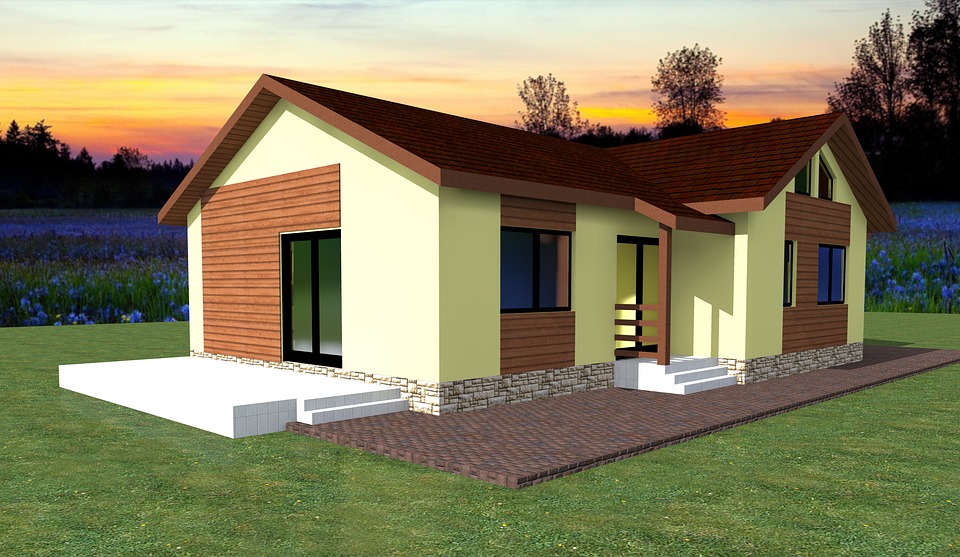3D Printing is changing the construction industry
July 9th, 2018
The construction industry has traditionally been very conservative and at times slow to innovate, however a change seems to be occurring. The industry is now embracing more innovative technology and the introduction of 3D printing buildings and homes is one current example of this.
The 3D buildings are made by a very large 3D printer that consists of a robotic base which has 360 degrees of motion and a smaller arm that prints out various building materials. This technology holds great potential in the construction industry and investing into such forms of research makes companies eligible to obtain a Research and Development (R&D) Tax credit.
The technology has been put to the test and has successfully built entire two bedroom, one bathroom homes in under 24 hours for $5,100. Everything besides the roof was 3D printed in a time frame of 12-24 hours. The homes are made from concrete and once completed are transportable on the back of a truck.
It is predicted that eventually 3D printing will become a common feature in the fabrication process. 3D printing specific for the construction industry has been researched and refined for almost a decade now.
It has been proven that 3D printed buildings are built much faster and cost a lot less than traditional buildings. Such significant decrease of cost and time to build a home could even be the solution for ending homelessness in impoverished areas. The 3D printers allow for buildings to be made to any specification and allow architects to have more freedom when designing their projects. Such R&D has the potential to create a boom in the construction industry and provide safe homes for millions of people.
The construction industry affects every Australian as it has a direct impact on our homes, workplaces, schools, hospitals, water supplies and so forth. The industry is also the fourth largest contributor to our GDP and employs almost 10% of Australia’s workforce. R&D will create smarter construction operations, processes and techniques and will help ensure Australia’s place in a competitive global economy.
Innovation in construction is greatly supported by the government and can be eligible to receive an R&D Tax Incentive. Swanson Reed R&D Tax Consultants help companies to claim this incentive and help ensure that companies receive the maximum eligible amount. If your company is developing novel solutions, take our online eligibility quiz to find out whether you qualify for a tax rebate.
Categories
- ATO Guidance and Materials
- AusIndustry Guidance and Materials
- Case Law
- Federal Budget 2021
- Federal Budget 2022
- For Accountants
- General Information
- Government Policy and Treasury
- Industry Specific Issues
- Interpretative Decisions
- Legislation and Parliamentary Matters
- R&D Tax Credit
- R&D Tax Funding Strategies
- R&D Tax Loans
- Recent News
- Tax Determinations
Archives
- April 2024
- March 2024
- February 2024
- January 2024
- December 2023
- November 2023
- October 2023
- September 2023
- August 2023
- July 2023
- June 2023
- May 2023
- April 2023
- March 2023
- February 2023
- January 2023
- December 2022
- November 2022
- October 2022
- September 2022
- August 2022
- July 2022
- June 2022
- May 2022
- April 2022
- March 2022
- February 2022
- January 2022
- December 2021
- November 2021
- October 2021
- September 2021
- August 2021
- July 2021
- June 2021
- May 2021
- April 2021
- March 2021
- February 2021
- January 2021
- December 2020
- November 2020
- October 2020
- September 2020
- August 2020
- July 2020
- June 2020
- May 2020
- April 2020
- March 2020
- February 2020
- January 2020
- December 2019
- November 2019
- October 2019
- September 2019
- August 2019
- July 2019
- June 2019
- May 2019
- April 2019
- March 2019
- February 2019
- January 2019
- December 2018
- November 2018
- September 2018
- July 2018
- June 2018
- May 2018
- April 2018
- March 2018
- February 2018
- January 2018
- December 2017
- November 2017
- September 2017
- August 2017
- July 2017
- June 2017
- May 2017
- April 2017
- March 2017
- February 2017
- January 2017
- December 2016
- November 2016
- October 2016
- September 2016
- August 2016
- July 2016
- June 2016
- May 2016
- April 2016
- March 2016
- February 2016
- January 2016
- December 2015
- November 2015
- October 2015
- September 2015
- August 2015
- July 2015
- June 2015
- May 2015
- April 2015
- March 2015
- February 2015
- January 2015
- November 2014
- October 2014
- September 2014
- August 2014
- July 2014
- June 2014
- May 2014
- April 2014
- March 2014
- February 2014
- January 2014
- December 2013
- November 2013
- October 2013
- September 2013
- May 2013
- April 2013
- March 2013
- September 2012
- August 2012
- June 2012


 Free Call: 1300 009 390
Free Call: 1300 009 390





 News & Research
News & Research



